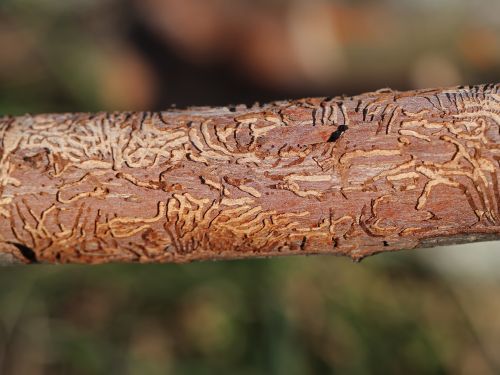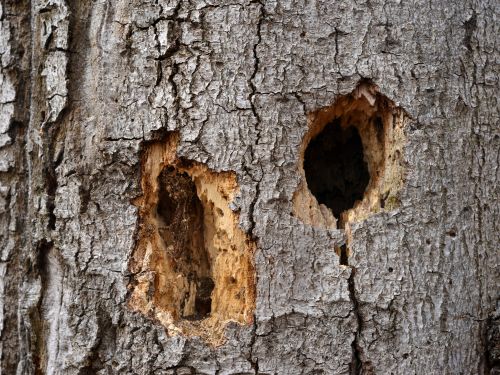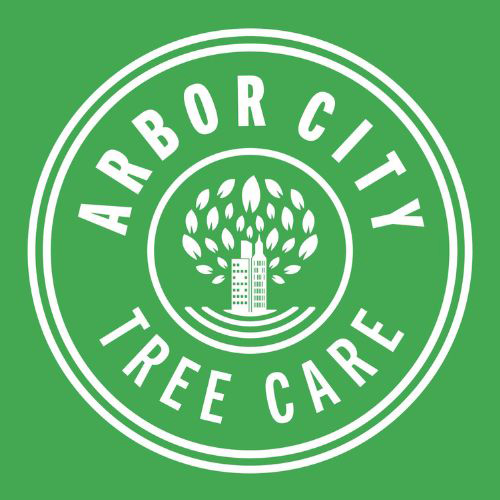Trees are a vital part of the Pacific Northwest landscape, providing beauty, shade, and environmental benefits. However, our region’s wet climate, mild winters, and diverse ecosystems can create ideal conditions for tree diseases and pests. Understanding the most common threats and how to manage them is essential for homeowners, landscapers, and arborists looking to maintain healthy trees.

Common Tree Diseases in the Pacific Northwest
Anthracnose
Anthracnose is a fungal disease that commonly affects maple, ash, and oak trees in the Pacific Northwest. It causes leaf discoloration, wilting, and premature leaf drop. Moist, cool spring weather encourages the fungus to spread.
Prevention & Treatment: Proper pruning to improve air circulation, removing infected leaves, and applying fungicides in early spring can reduce the impact of anthracnose. Choosing disease-resistant tree species also minimizes risk.
Root Rot
Root rot, caused by fungi such as Phytophthora, attacks the roots of trees like dogwoods, firs, and pines. Trees may exhibit stunted growth, yellowing leaves, and a decline in overall vigor. Wet soils and poor drainage exacerbate root rot problems.
Prevention & Treatment: Ensuring proper drainage and avoiding overwatering are key preventative measures. Infected trees may require professional treatment, including root pruning or fungicide application.
Leaf Spot Diseases
Leaf spot fungi are widespread in the Pacific Northwest due to high humidity and frequent rainfall. Affected trees display small brown or black spots on leaves, which may eventually cause defoliation.
Prevention & Treatment: Remove fallen leaves to reduce fungal spores, avoid overhead watering, and apply appropriate fungicides when necessary.
Canker Diseases
Cankers are localized dead areas on tree bark caused by fungi or bacteria. Common species affected include cherry, maple, and ash. Signs include sunken bark, oozing sap, and branch dieback.
Prevention & Treatment: Pruning infected branches and avoiding injury to the bark are critical. In severe cases, professional arborist intervention may be required to prevent tree death.
Call Our Team for Help with Tree Diseases and Pest Management!
Common Tree Pests in the Pacific Northwest
Emerald Ash Borer
This invasive beetle targets ash trees, boring into the wood and disrupting nutrient flow. Early signs include canopy thinning, bark splitting, and D-shaped exit holes.
Prevention & Treatment: Insecticide injections and regular monitoring are effective. Removing heavily infested trees helps limit spread.
Aphids
Aphids are small, sap-sucking insects that infest new growth on a wide variety of trees, including maples and roses. Infested leaves may curl, yellow, or become sticky with honeydew.
Prevention & Treatment: Encourage beneficial insects such as ladybugs, use horticultural oils, and apply insecticidal soaps when necessary.
Bark Beetles
Bark beetles attack conifers like pines and firs, burrowing under the bark to lay eggs. Infestations can lead to tree decline or death.
Prevention & Treatment: Maintain tree health through proper watering and fertilization. Removing stressed or dead trees promptly can prevent infestations.
Tent Caterpillars
Tent caterpillars create web-like tents in tree branches and feed on foliage, weakening the tree over time.
Prevention & Treatment: Manual removal of tents, application of Bacillus thuringiensis (Bt) products, and pruning affected branches are effective management strategies.
Best Practices for Tree Health
Maintaining healthy trees is the most effective way to prevent diseases and pests. Some key practices include:
- Regular Inspections: Check for early signs of disease or pest activity.
- Proper Watering: Avoid overwatering or waterlogging soil.
- Pruning & Mulching: Improve air circulation and remove diseased or dead branches.
- Soil Management: Fertilize appropriately and maintain soil health.
- Professional Care: Consult certified arborists for serious infestations or diseases.
Building a Healthier Future for Your Trees and Landscape
Proper tree care in the Pacific Northwest requires vigilance, knowledge, and timely action. By understanding the common diseases and pests that threaten local trees, homeowners and landscapers can implement preventative measures and effective treatments to ensure tree health and longevity. Regular inspections, proper pruning, soil management, and professional support when needed all contribute to thriving trees that enhance the beauty and value of your property. Staying proactive with tree disease and pest management not only protects individual trees but also helps preserve the overall health of the region’s urban and natural landscapes.

